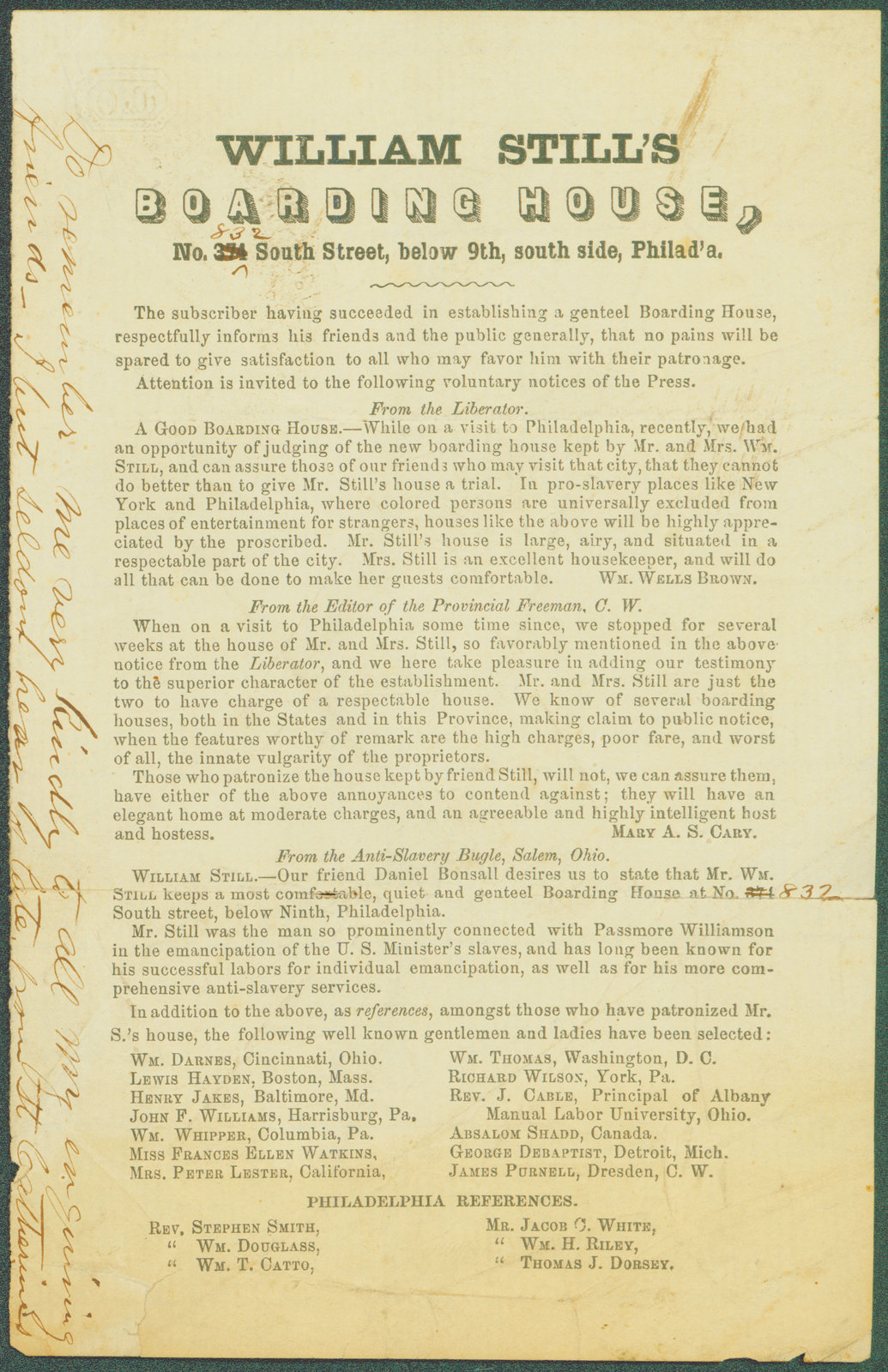Mary Ann Shadd Cary (1823-1893) was an American abolitionist (a person who fought to abolish slavery) and teacher invited to move north to the Chatham area by Henry Bibb, to open and run a school for black students.
Mary was born to free parents in Delaware in 1823, and grew up with the intent to teach and run schools to better the futures of black children. While she met with success running a school in the States, she was captivated by the idea that Henry Bibb presented, of a northern black utopia, and moved to Canada in 1851, opening a racially integrated school near Windsor.
Mary was fiercely political and often argued with Henry's published stances on various issues - most often as to whether free black people ought to assimilate into Canadian culture, or establish their own distinct culture within their communities. Mary believed in integrated education; Henry in self-sufficient black communities.
Mary and Henry had a serious falling-out in 1852, shortly after her relocation. Their argument centred around Henry's Refugee Fund, which accepted charitable donations to help travelers from the Underground Railroad get established in Canada West.
Not long after, Mary moved to Toronto and started her own newspaper, The Provincial Freeman. This was the very first woman-run publication in Canada - and because of the stigma against women at the time, Mary hid her involvement by putting a man's name on the masthead as publisher, sometimes her brother Isaac. She was also the first black female publisher in North America.
Almost every reader knew the true driving force behind The Provincial Freeman, and referred to her as the "editress" in their letters.
The Provincial Freeman's motto was "Self-reliance is the true road to independence" and it made lots of arguments about both the appeal of moving up to Canada from the States and starting black communities, and how those communities should operate. Mary believed that people should not rely on charity, even just to get started after a terrifying escape from slavery, and that black communities should establish themselves through a combination of integrated and independent services.
Mary kept up lots of contacts south of the border, both to encourage news of ongoing abolition efforts and to provide connections for people travelling north to escape slavery and abuse.
One such contact, William Still, operated a black-friendly rooming house in Philadelphia and frequently wrote dispatches for The Provincial Freeman. He also subscribed to the newspaper and distributed copies to his friends in the city.
After The Provincial Freeman closed in 1860, Mary moved back to the States, recruiting black people for the Union army during the Civil War. She also attended law school at Howard University, after petitioning to be the first woman allowed in, and was the first black woman to cast a vote in a national election after campaigning for the vote. She practiced law until her death in 1893.
Shadd’s other accomplishments include founding a racially integrated school; at one point, she took to travelling the country giving speeches and handing out vanity pamphlets about abolition and emigration to Canada for free black people in America. One such pamphlet’s title: A Plea for Emigration; or Notes of Canada West, in Its Moral, Social and Political Aspect: with Suggestions respecting Mexico, West Indies and Vancouver’s Island for the Information of Colored Emigrants. From that pamphlet, written in 1852 just after Mary's emigration to Canada:
Certain that neither a home in Africa, nor in the Southern States, is desirable uner present circumstances, inquiry is made respecting Canada. I have endeavoured to furnish information to a certain extent ... I determined to visit Canada, and to there collect such information as most persons desire.....
If a colored man understand his business, he receives the public patronage the same as a white man. He is not obliged to work a little better, and at a lower rate - there is no degraded class to identify him with, therefore every man's work stands or falls according to meirt, not as is his color. Builders, and other tradesmen, of different complexions, work together on the same building and in the same shop, with perfect harmony, and often the proprietor of an establishment is colored, and the majority or all of the men employed are white.
... To set forth the advantage of a residence in a country, in which chattel slavery is not tolerated, and prejudice of color has no existence whatever ....
Mary's legacy has been commemorated with a bronze bust and historical plaque in Chatham; nearby, the Buxton National Historic Site and Museum has her printing press on display.





